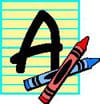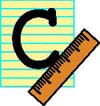June 11, 2013
Best Care for a Child’s Vision
 What is Amblyopia and how is it identified?
What is Amblyopia and how is it identified?
Amblyopia is commonly known as Lazy Eye. A study by the American Academy of Pediatrics has shown that, although school-administered vision screenings have some benefit, it is very important for amblyopic children to receive an eye examination by an optometrist. Amblyopia is responsible for more cases of vision loss in people younger than 45 than all eye diseases and injuries combined. Half of all children with amblyopia are diagnosed after age five when therapy is not as effective.
 By what age should my child have an eye exam?
By what age should my child have an eye exam?
Vision Center PC and the American Optometric Association recommend children have a comprehensive eye exam at ages 6 months, 3 years, once before starting Kindergarten, and annually there-after.
Vision Center PC is a participant of InfantSEE®: a no-cost public health program developed to provide professional eye care for infants nationwide. Through InfantSEE®, our optometrists will provide, at no cost regardless of income, a one-time, comprehensive eye assessment to infants, 6 to 12 months of age, offering early detection of potential eye and vision problems.
 Does my child need to be able to read an eye Chart to have an exam?
Does my child need to be able to read an eye Chart to have an exam?
No, Vision Center PC’s optometrists have special instruments they use to examine an infant’s eyes and determine the prescription without the child having to read shapes or letters on the chart in front.
The portion of the brain that receives stimulation from the eyes is rapidly developing until age six or seven. If there is a problem with a child’s eyes that is not corrected before that age, there is a strong chance that child may be left with permanent vision loss or legal blindness.
 Can reading in the Dark, or sitting too close to the TV, damage my child’s eyes?
Can reading in the Dark, or sitting too close to the TV, damage my child’s eyes?
Neither reading in the dark nor sitting too close to the TV screen will damage a child’s eyes. Both can cause mild eyestrain for the child, but no damage will occur.
The most important items to remember for good healthy vision are: wearing good quality sunglasses, eating healthy foods rich in anti-oxidants (fruits, green leafy vegetables) and staying away from tobacco.
Remember, 80% of all Learning is developed through Vision.The latest research from the AOA shows that eighty percent of all learning during a child’s first 12 years is obtained through their vision. Vision disorders are now the fourth most common disability in the U.S. and the leading cause of handicapping conditions in childhood. |
